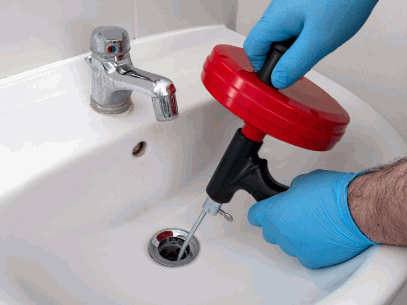Clogged bathroom sink drains are a common and frustrating plumbing problem that can disrupt your daily routine.
From hair and soap scum to toothpaste remnants, various culprits contribute to these blockages.
This article explores the reasons behind clogged drains, the signs to watch for, and effective clogs prevention methods.
Additionally, you’ll find a handy step-by-step guide for cleaning your sink drain using simple tools and tips for maintaining a clog-free experience.
Dive in to keep your bathroom running smoothly!
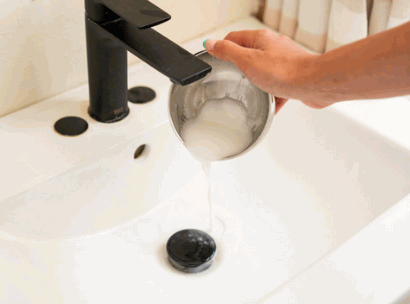
Why Do Bathroom Sink Drains Get Clogged?
Bathroom sink drains can become clogged for various reasons, leading to significant plumbing problems that may require professional intervention. The primary culprits include hair build-up, soap scum, and other debris that accumulate over time, creating blockages that can hinder water drainage. In Charleston, South Carolina, where humidity contributes to mold buildup, understanding the factors that lead to clogs can aid homeowners in maintaining their bathroom sink effectively. Using knowledge about clogs prevention can also help avoid costly repairs and keep your bathroom in top shape.
Explore: Can You Use Drain Cleaner In Dishwasher
Hair Build-up
Hair build-up is one of the leading causes of clogged bathroom sinks, often resulting in frustrating plumbing issues that can lead to dirty water backing up into the sink. This unsightly accumulation is not only bothersome, but it can also impact the efficiency of the entire drainage system, creating a cascade of problems if not addressed promptly.
Over time, strands of hair intertwine with soap scum and various debris, gradually forming a stubborn blockage. To keep drains flowing freely, homeowners should consider implementing regular maintenance practices.
- Drain Snake: A flexible tool that can easily navigate through pipes, pulling out hair clogs without harsh chemicals.
- Cleaning Solutions: Using enzymatic or biodegradable cleaners and the vinegar method specifically designed to dissolve hair clogs is an excellent preventive measure.
- Preventive Screens: Installing hair catchers can significantly reduce the amount of hair that makes its way into the plumbing.
By taking these steps, one can maintain a healthier and more functional drainage system, minimizing the risk of future clogs and ensuring effective debris removal.
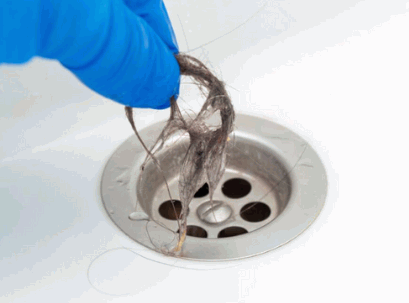
Soap Scum And Residue
Soap scum and residue build-up can quickly contribute to drain clogs in bathroom sinks, especially if not regularly cleaned with appropriate cleaning supplies.
This accumulation can create a sticky surface that traps moisture, making it easier for mold and mildew to thrive in damp areas, which can be prevented through regular sink maintenance. When soap residue interacts with water, it forms a thick layer that adheres to surfaces, leading to unsightly stains and potential health hazards.
To combat this issue, consider utilizing effective cleaning methods such as:
- Vinegar and baking soda: This natural solution can break down soap scum effectively.
- Lemon juice: Its acidity can help dissolve buildup while leaving a fresh scent.
- DIY scrub: A mixture of equal parts of water and dish soap applied with a sponge or cloth.
Regular maintenance can prevent mold growth and keep spaces looking pristine.
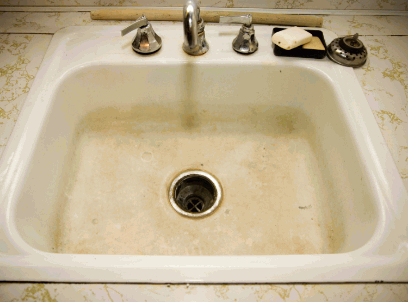
Toothpaste And Other Gunk
Toothpaste and other gunk can accumulate in bathroom sink drains, often mixing with hair and soap residue, leading to significant clogs that require thorough debris removal.
Over time, this mixture creates a thick sludge that not only impedes water flow but also emits unpleasant odors. Regular cleanings can help mitigate these issues before they escalate.
To maintain a healthy drain and prevent plumbing problems, consider the following methods:
- Monthly flush: Pour a kettle of boiling water and a vinegar solution down the drain to loosen debris.
- Baking soda and vinegar: A natural solution that helps break down buildup.
- Hair catchers: Install a simple screen to catch hair before it enters the pipes.
By integrating these practices into routine cleaning, one can prevent future clogs and maintain a fresher bathroom environment.
What Are The Signs Of A Clogged Drain?
Identifying the signs of a clogged drain early can prevent further plumbing problems and save you from extensive repairs in the future. Symptoms such as slow drainage, foul odors emanating from the sink, and water backing up can indicate that your bathroom sink requires immediate attention. In Charleston, South Carolina, understanding these signs can help homeowners take swift action to maintain their plumbing effectively, potentially avoiding the use of harsh chemicals or chemical cleaners.
Slow Drainage
Slow drainage is often the first noticeable sign of a clogged drain, indicating that debris may be obstructing water flow in your plumbing system.
This common issue may stem from various factors, such as buildup from grease, hair, soap residue, or foreign objects accidentally flushed down the toilet.
Ignoring a slow drain can lead to more serious plumbing problems, including complete blockages or even pipe damage, which could result in costly repairs.
To tackle this problem effectively, homeowners can consider several drain cleaning techniques and maintenance tips.
- Start with a simple plunge to dislodge any visible blockages.
- If that doesn’t work, try a mixture of baking soda and vinegar, allowing it to bubble for a few minutes before flushing with hot water.
- For stubborn clogs, using a plumbing snake can help break down tougher obstructions.
These methods can often restore proper drainage, ensuring the plumbing system remains in good shape.
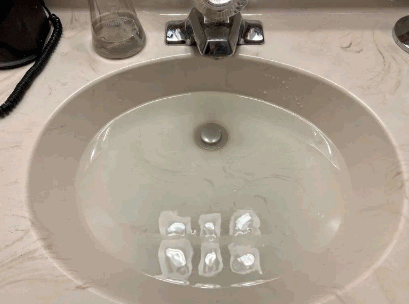
Foul Odors
Foul odors coming from your bathroom sink can be a clear indication of a clogged drain, often caused by stagnant water or build-up of debris within the pipes.
Such unpleasant smells not only disrupt the comfort of your home but may also signal potential plumbing issues that require immediate attention. When traps or vents accumulate waste or are obstructed, the unpleasant scents tend to linger and can worsen over time. To effectively combat these odors, a few methods can be employed:
- Natural Solutions: Utilizing household items like vinegar and baking soda is an eco-friendly approach. Pouring a mixture of these two down the drain can help dissolve debris and neutralize odors.
- Regular Maintenance: Performing routine cleaning can prevent buildup. Flushing warm water or a combination of salt and lemon juice can keep drains fresh.
- Professional Help: If the smells persist, consulting a plumber may be necessary to thoroughly assess the drainage system and address any underlying problems.
By taking these proactive measures, homeowners can ensure a more pleasant atmosphere while safeguarding their plumbing.
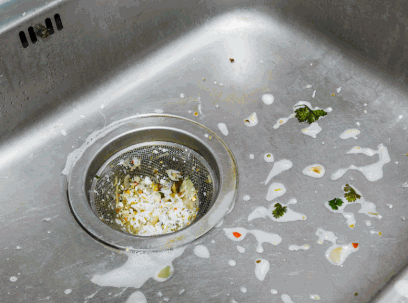
Water Backing Up
Water backing up in your bathroom sink is a telltale sign of a clogged drain that requires immediate attention to prevent further plumbing issues.
This situation, while seemingly minor, can escalate quickly. If left unattended, it can lead to serious consequences such as overflowing water, structural damage, and costly repairs. The pressure builds up, causing the water to find alternative paths, which might include seeping through walls or flooring.
To address water backup effectively, one should regularly inspect the sink for hair and debris, and consider using a plunger to clear the blockage.
- Maintain a routine schedule for cleaning drains.
- Use a mixture of baking soda and vinegar to dissolve minor clogs naturally.
- If the issue persists, don’t hesitate to call a professional for help.
Addressing the problem sooner rather than later can save homeowners from significant distress and financial burden, particularly in Charleston, South Carolina.
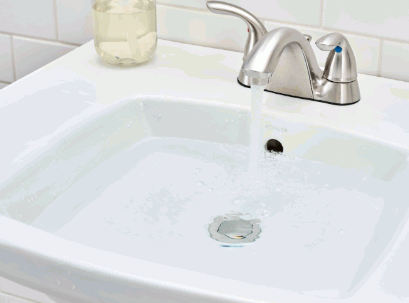
How Can You Prevent Clogs In Bathroom Sink Drains?
Preventing clogs in bathroom sink drains is essential for maintaining a functional plumbing system and ensuring that water drains efficiently. Regular sink maintenance is vital, especially in humid areas like Charleston, South Carolina, where mold buildup can exacerbate potential plumbing problems. By utilizing natural cleaners, such as vinegar and baking soda, homeowners can create effective DIY solutions that promote optimal drainage while avoiding the harsh chemicals found in traditional drain cleaners. This proactive approach not only enhances the longevity of your plumbing system but also contributes to a cleaner and more pleasant home environment.
What Tools Do You Need To Clean A Clogged Drain?
Having the right tools and supplies, such as a toilet plunger and drain snake, on hand is crucial when it comes to effectively cleaning a clogged drain. Essential items like a plunger, drain snake, and the baking soda and vinegar method can make tackling stubborn clogs a much simpler task. In Charleston, South Carolina, where plumbing problems can arise frequently, knowing how to utilize these tools can give the power to homeowners to take charge of their sink maintenance without relying on harsh chemical cleaners.
Plunger
A plunger is a vital tool for unclogging drains and can be particularly effective when dealing with minor blockages in your bathroom sink.
Understanding the proper techniques for using this essential device can make all the difference. When facing a stubborn clog, it’s important to position the rubber suction cup over the drain opening and create a firm seal. By using quick, short thrusts, you can generate enough pressure to dislodge the blockage.
For optimal effectiveness and to help you unclog drain issues, consider using a plunger with a flange, as it provides a better fit for toilet openings., consider using a plunger with a flange, as it provides a better fit for toilet openings. After usage, maintenance is crucial; rinse it thoroughly and store it in a dry area to prevent bacteria growth.
- Before plunging, fill the sink or toilet with enough water to cover the plunger’s cup.
- Make sure to use consistent force during your thrusts to maximize suction.
These simple practices can give the power to homeowners to resolve clogs efficiently without relying on harsh chemicals.
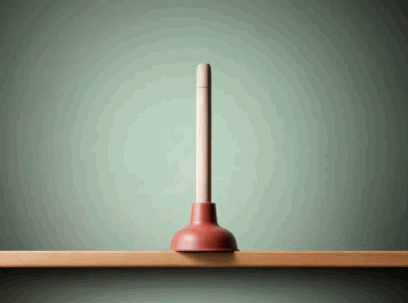
Drain Snake
A drain snake is an invaluable tool for removing stubborn clogs that a plunger may not be able to handle, making it essential for effective drain cleaning.
This versatile device operates by navigating through pipes, dislodging debris that may be stuck out of reach, making it an essential part of your home cleaning routine. Unlike traditional tools, such as plungers or chemical cleaners, a drain snake offers a mechanical solution that is often more effective for severe clogs. It’s particularly beneficial when dealing with hair, grease, or roots that might otherwise require extensive plumbing work.
- Consider using a drain snake when:
- You notice slow drainage in sinks or bathtubs.
- Repeated plunging has failed to clear the blockage.
- Hearing gurgling noises from your pipes.
By utilizing a drain snake, you not only save time but also reduce the risk of damaging your plumbing system.
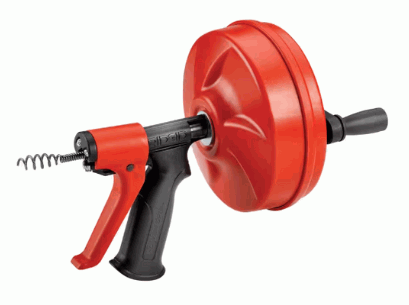
Baking Soda And Vinegar
The baking soda and vinegar method is a popular and eco-friendly DIY solution for unclogging drains, utilizing the natural reaction between these two household items to break down debris, making it an effective alternative to harsh chemical cleaners that can harm both pipes and the environment. This simple, cost-effective technique not only helps clear blockages but also maintains the flow of water in your plumbing system, elongating its lifespan and efficiency.
To use this method effectively, follow these steps:
- Preparation: Gather half a cup of baking soda, half a cup of vinegar, and a pot of boiling water to start your unclogging journey.
- Add Baking Soda: Pour the baking soda down the affected drain, ensuring it reaches deep into the pipes.
- Incorporate Vinegar: Next, follow with the vinegar. You might want to cover the drain with a plug or a cloth to keep the reaction contained.
- Wait: Allow the mixture to sit for about 15-30 minutes. This waiting period is crucial for the reaction to effectively dissolve the clog.
- Rinse: After the time has passed, flush the drain with a pot of boiling water to wash away the loosened debris.
Doing this process periodically can help prevent future clogs, ensuring a smoother drainage experience.
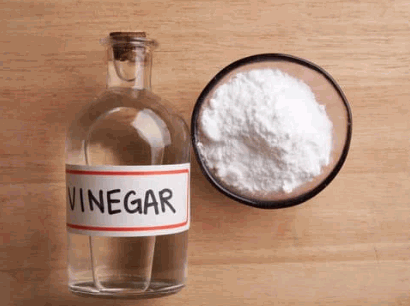
Step-by-Step Guide To Cleaning A Clogged Bathroom Sink Drain
Cleaning a clogged bathroom sink drain can seem daunting, but following a step-by-step guide can make the process manageable and effective. Begin by gathering your cleaning supplies, including a drain snake, plunger, and natural solutions such as baking soda and vinegar. Before diving into the cleaning process, it’s essential to remove the drain cover and inspect for any visible debris or clogs that may be causing the issue. In Charleston, South Carolina, homeowners can benefit from utilizing professionals and effective home improvement techniques, enabling them to tackle plumbing problems with confidence and ease.
Remove The Drain Stopper
The first step in cleaning a clogged bathroom sink drain is to remove the drain stopper to access the area that may be harboring debris.
Once the stopper is removed, you can inspect the drain for any noticeable build-up of hair, soap scum, or other materials that contribute to clogs. It’s important to do this carefully, ensuring that you extract as much of the debris as possible, as leaving anything behind, like skin oils, could lead to future blockages.
After clearing away the excess material, run some hot water down the drain to help flush out any remaining particles. You might consider using a bio-degradable cleaner or a hydrogen peroxide solution for effective clogs removal. P-Trap or a drain cover if further cleaning is needed.
- plumbing snake
- drain cleaner
- or a mixture of baking soda and vinegar
if further cleaning is needed.
This thorough approach not only clears existing blockages but also helps in maintaining the overall health of the plumbing system.
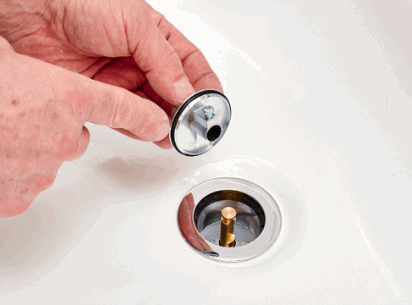
Use A Plunger
Using a plunger is often an effective way to unclog a drain, creating pressure that can dislodge minor blockages within the plumbing system, particularly when dealing with hair and skin oils. Mastery of this simple tool can save time and money.
To begin, position the rubber cup over the drain opening, ensuring it forms a tight seal. Grip the wooden handle firmly, and apply downward force, then pull up swiftly to create suction. Repeat this motion vigorously for about 10-15 seconds.
It’s crucial to maintain a steady rhythm in both the downward and upward motions to optimize the pressure created within the pipes.
- Check water levels: If the water starts to drain, this indicates that the method is working.
- Evaluate the blockage: If there’s no progress after numerous attempts, it may be time to consider other options.
The plunger is generally effective for minor clogs, particularly those caused by soap buildup or hair, but persistent issues may indicate a more serious plumbing problem.
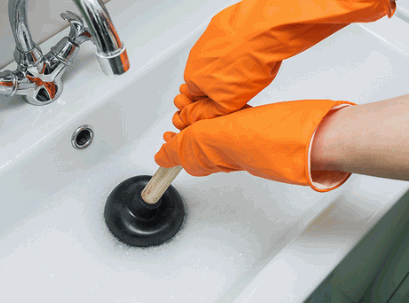
Try A Drain Snake
If the plunger does not work, a drain snake can be employed to reach deeper clogs and remove debris effectively.
This handy tool is particularly useful for tackling stubborn blockages that a simple plunger can’t dislodge, especially in homes where monthly cleaning routines are overlooked. When an individual encounters an obstruction in their plumbing system, they may notice slow-draining sinks, toilets that won’t flush properly, or showers that retain water. Using a drain snake allows one to remove persistent clogs like hair, soap buildup, or even foreign objects without the need for harsh chemicals.
- First, ensure the area is safe and clear.
- Next, insert the snake into the drain and slowly twist the handle.
- Once it reaches the blockage, pull it back gently to retrieve any debris.
To keep the snake in good condition, it’s essential to clean it thoroughly after each use and store it in a dry place to avoid rust, just as you would with other home improvement tools. Regular inspections for any damage will also prolong its lifespan, ensuring that it remains an effective solution for future clogs.
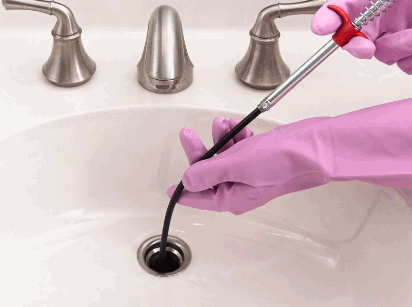
Use Baking Soda And Vinegar
The baking soda and vinegar method can be an effective natural cleaner for unclogging drains, utilizing the effervescent reaction to break down stubborn debris.
To execute this method, begin by pouring about half a cup of baking soda directly into the clogged drain. Follow this with a full cup of vinegar, which will react with the baking soda and produce bubbling action that can help to loosen the buildup within the pipes.
Timing is crucial; allow the mixture to sit for at least 30 minutes, giving it ample time to work its magic. For optimal results, especially in Charleston, South Carolina, consider flushing the drain with hot water afterward to clear any remaining debris.
- Repeat the process if necessary for tougher clogs.
- For preventative maintenance, use this method once a month.
Ensure you are not using this method too frequently, as it may cause wear on older pipes. Following these steps will help maintain a clear and functioning drainage system.
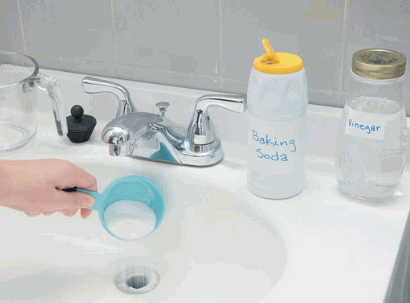
Tips For Maintaining A Clean Bathroom Sink Drain
Proper sink maintenance, including regular monthly cleaning, is essential for preventing clogs and ensuring that your bathroom sink functions optimally over time. In Charleston, South Carolina, regular monthly cleaning can help homeowners stay ahead of potential plumbing issues. Utilizing cleaning supplies like baking soda, natural cleaners, or biodegradable options can also promote a healthier home environment while reducing the need for harsh chemicals like Drano. By implementing proactive measures, homeowners can enjoy a clean sink and avoid the inconvenience of dealing with clogged drains.
